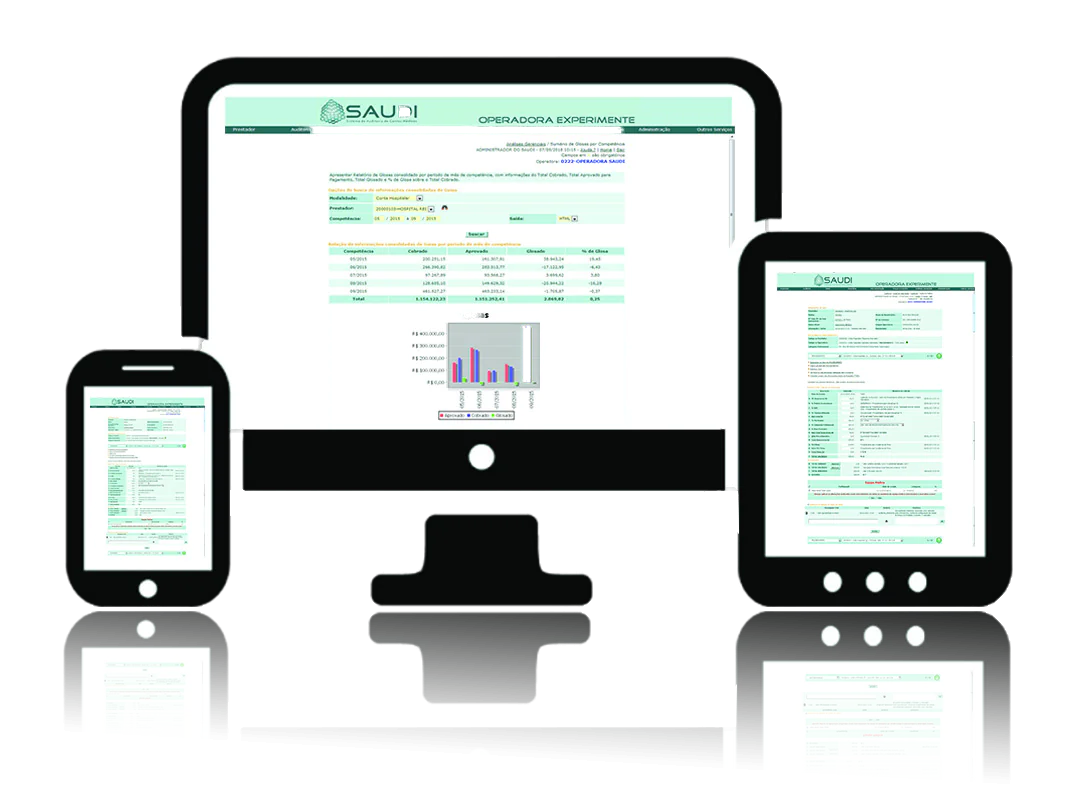Working in the healthcare sector means constantly striving for excellence. In a rigid sector that is constantly changing, whether due to new technologies or changes in legislation, it is a challenge to remain competitive.
For health plan managers, the challenge is even greater. Managing the institution's financial operations requires a lot of work and balance. Therefore, understanding what accidents are, why they happen and why they are harmful to the operator's financial health is of paramount importance.
In this article, we will explain what accidents are and give 5 tips on how to avoid them! Keep reading!
But, after all, what is accident rate?
The medical procedures offered by the health plan operator are not charged individually or separately, but rather through a fixed fee compensated periodically.
When the beneficiary uses a medical service, such as a consultation, an exam or surgery, it generates a “claim”. The sum of the claims represents the “price” of the procedures for the operator.
Thus, the loss ratio consists of a relationship between the number of claims generated by beneficiaries and the “premium”, which corresponds to the revenue received by the health plan operator. It is calculated as follows:
Loss ratio (in %) = [(loss value)/(premium value)]/100
Thus, the accident rate expresses an imbalance between the value of the procedures performed and the price of the health plan.
Why do accidents bring financial losses to the operator?
When the percentage of claims is higher than expected, the health plan operator needs to increase the premium amount for the account to close the following month. This, in addition to causing immediate losses, causes the value of the plan to rise and, consequently, cost more, both for the company (or the individual) and for the operator.
Currently, health care costs can reach 20% of fixed expenses of a company or corporation. This high value also has a negative impact on health plan operators, harming their financial stability.
Furthermore, the accident rate can also make negotiation more difficult, both for accredited networks and service providers. This, in the end, is reflected in the operator's ability to offer quality service to beneficiaries.
Why does the increase in accident rates happen?
In general, accidents occur due to three distinct situations:
- when there is excessive (and unjustified) use of medical procedures by beneficiaries;
- when atypical procedures occur that have a high cost for the institution, such as emergency care in cases of accidents or prolonged hospitalizations;
- when the value of the premiums does not agree with the real value of the medical procedure.
This practice, which can also occur due to poor information management, ends up leading to a loss of credibility with accredited networks and causing losses to the operator, since, in the end, the operator is left at a loss, and the beneficiary needs to pay the readjustment.
Below, check out how to better control the value of premiums and other tips to avoid accidents!
How can the operator avoid accidents?
1. Check the value of the prizes
As we mentioned, the negative imbalance between the value of claims and premiums can cause the operator to collect an amount lower than the assistance costs. This causes financial loss and can be fatal. Therefore, it is important that the manager is aware of the prices charged in the market and also has a medical audit reliable, in addition to a good actuarial calculation.
2. Control how often you use the plan
It is very common for beneficiaries to use the health plan too much, carrying out consultations or exams without justification or even using the emergency service when the situation is not emergency.
Stimulating collective thinking instead of individual thinking, making the agents involved aware of the appropriate use of the health plan, is very important to avoid accidents.
A practical way to do this is by encouraging the beneficiary to pay attention to the validity of their exams. If they are within their expiration date, ideally they should be used for new consultations. This avoids the need for further tests and also speeds up medical care.
3. Provide guidance on the rational use of health plans
Just as excessive use of the health plan by beneficiaries can lead to accidents, on the other hand, the hospital and/or health institution can also commit excess, ordering redundant tests or carrying out inadequate or inefficient treatments.
This can happen for several reasons: cheats, poor professional training or even a culture of “abundance” on the part of doctors, who do not take into account the price of the procedures performed.
Guiding the rational use of health plans means promoting discussions, for both professionals and patients, about the real value of the procedures. In the end, by using resources well, everyone wins.
4. Align internal processes
Aligning internal processes means making the operator's sectors act as a single organism, in an orchestrated, dynamic and efficient way. This avoids rework and scattered information and also optimizes the use of resources, directly reflecting on the quality of the service provided and helping to reduce accidents.
A good way to align internal processes is with the help of management software. Stay tuned for the tip below!
5. Use management software
As we said, it is common for beneficiaries to overuse the health plan. Specialized management software gives the operator greater control in this regard, offering an overview of the procedures carried out. For the health plan operator, this type of information is essential, as it helps to manage the institution's financial operations.
In addition to greater control over the beneficiary, we can also mention how benefits of management software process automation and effective cost control.
Automation minimizes errors, improves results and plays a significant role in aligning internal processes. Furthermore, it also provides a concrete basis, based on quantitative information, for the manager to align the operator's strategies.
Effective cost control directly helps reduce accidents, helping to manage contracts, indicating non-compliant premium values and avoiding waste. Invest in a software management is a great option to obtain better financial results.
Therefore, we understand what accident rates are and why they are harmful to the revenue of health plan operators. We saw the importance of rational use of medical services and also that management software is a great ally in the management of health plan operators. Finally, we understand that the adoption of specialized management software is essential to reduce accidents.
And there? Did you like our content? Want to know a little more about us? SAUDI is management software specialized in “maintaining the financial health” of supplementary health plan operators. We are the only one on the market specializing in costs! Are you interested? Want to know how we can help? Then, contact us! We will be happy to serve you!









